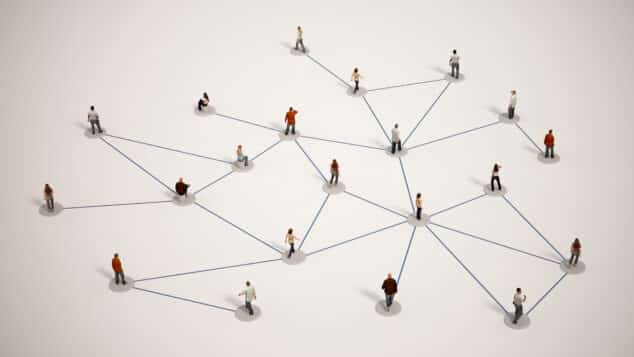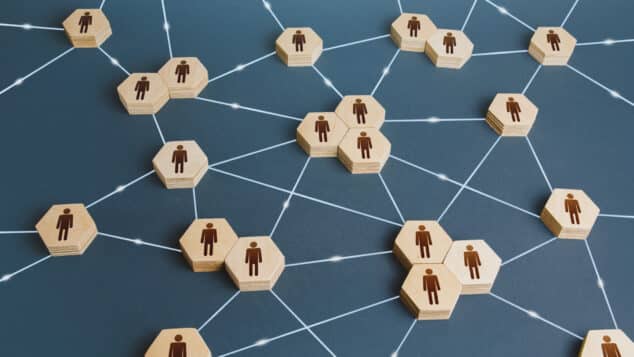User Personas for Associations: Benefits & Best Practices

Associations often struggle to tell their story in a way that people can easily understand what they do and why it matters. Many nonprofits face the same challenge, but there’s a solution: user personas.
User personas are a representation of your association’s top-priority audiences, based on research, data, and conversations. They give you a clear picture of your audiences’ demographics, behaviors, goals, and pain points, as well as how these audiences engage with the association. This knowledge can help you communicate with each segment effectively, create relevant and meaningful content, attract new audiences, and improve member retention rate.
Why Is It Important for Associations to Have User Personas?
For starters, personas allow you to connect with your audiences on a personal level and understand their needs and pain points, Kristian Alomá, Founder and CEO of Threadline, an organization that uses narrative psychology to develop association personas, points out: “It’s often an empathy exercise: Who are these folks and why do we care about them?”
Personas also help you see your association from different perspectives. Hilary Marsh, Chief Strategist at Content Company Inc., suggests associations go beyond the obvious audiences and “shift their perspective from inside-out to outside-in.”
Brian Haney, Founder and CEO of The Haney Company, a financial services provider for associations, also sees user personas as way to stand out in the digital economy: “The best marketing is about customization and hyper personalization.”—and user personas help you do just that.
He also points out that personas can create a better connection to your ideal member—the people you really want to reach—“by creating a meaningful two-way communication that you can build on, recognize and honor.”
How Data Plays into Developing User Personas
Data plays a crucial role in developing user personas. By gathering data from member profiles, surveys, website and social media analytics, you can create a more accurate representation of your membership. Reach out to your volunteers or other connected members and ask them questions. And if you haven’t already, start collecting data, create a baseline, and provide a framework.
Haney also shared a specific example of how data assisted in creating user personas for his company’s podcast. By doing a detailed study of their ideal listener, they determined specific topics and most importantly, discovered a 37-minute podcast is ideal for their listeners who are commuting to work.
But as Alomá explains, data doesn’t provide the whole picture: “Personas take elements of qualitative data, but weave it together with storytelling, imagery and anecdotes to create a more complete and specific picture of members.”
Best Practices for Developing User Personas
If you’re just getting started with user personas or looking to make them more effective, here are some best practices to follow:
- Start With Stories
Averie Wright, Assistant Director of Strategic Initiatives and Analytics at Chicago Semester, where they use personas to communicate with students, points out that stories are the most compelling part of a persona: “You have to start with stories—then move into data.”
Wright also notes, “It’s the audience’s story—the organization plays a side role.” The focus must be on the member’s needs and their own story before considering how they interact with the association.
- Bring Them to Life
Give your user personas a name, identity, and motto to make them feel more real and user-friendly. For example, instead of a “Financial Professionals” persona, you can create Franny the Financial Professional whose motto is: “I need to find new hires who can hit the ground running.”
They don’t need to be in a positive state of mind either. An example shared by Alomá is “Frustrated Frank”: a persona that focuses mainly on pain points.
- Join Members on Their Journey
Rather than waiting for members to find you, user personas allow you to meet members where they are. Develop personas from your audience’s perspective and you can create content, programming and services that fulfil their current—and future—needs.
Wright notes that they take this a step further by adding timeframes to personas, considering: “What is the rhythm of their life and how does it apply to our offerings?”
- Connect With Your Content
Incorporate personas into your association’s content strategy roadmap. Marsh states, “Successful content has to be a conversation or a connection between who you are as an association, who your top audiences are and what they want.”
Haney reiterates the benefits of implementing user personas in digital content such as websites and social media: “Your messaging lands more effectively. You’re speaking in an attraction way rather than blasting things out.”
- Use Your Personas Daily
Personas won’t do your association any good if they sit on a shelf. Print and and post them on the wall so team members can refer to them often. They should also be shared with any outside vendors to ensure consistency in your marketing and communications.
Marsh shared several creative ways associations have incorporated personas into their daily lives. One created life-size cutouts of the personas, introduced them at their quarterly meeting and kept them in their conference room. Another hosted a “scavenger hunt” in their content marketing to discover the appropriate persona.
- Don’t Go it Alone
Seek outside help if you are just starting your association’s user persona journey. As Marsh points out, “It takes practice and an outside perspective.”
Getting different sides of the story is also crucial. Wright suggests, “Find someone who can be on your team and creatively go through the process with you.” You don’t have to go it alone when developing user personas.
By developing effective user personas, your association can better connect with your ideal members. Wherever you are in your user persona process, step back and remember why you started. As Alomá reminds us, “When you have a clear sense of who members are and can express it in an evocative way, you are going to serve them better.”
Tags
Related Articles
The Emergency Nurses Association Utilizes Design Thinking to Reimagine its Awards Ceremony
In a prime example of intrapreneurship, the ENA utilized design thinking to innovate within the...
Report Reveals Strategies to Overcome Membership Decline
McKinley Advisors’ Membership Reset report provides a roadmap that association leaders can use to refocus...
Member Retention: More Than Just a Number
Learn how the AANA used humor and multichannel marketing to win back lapsed members.





